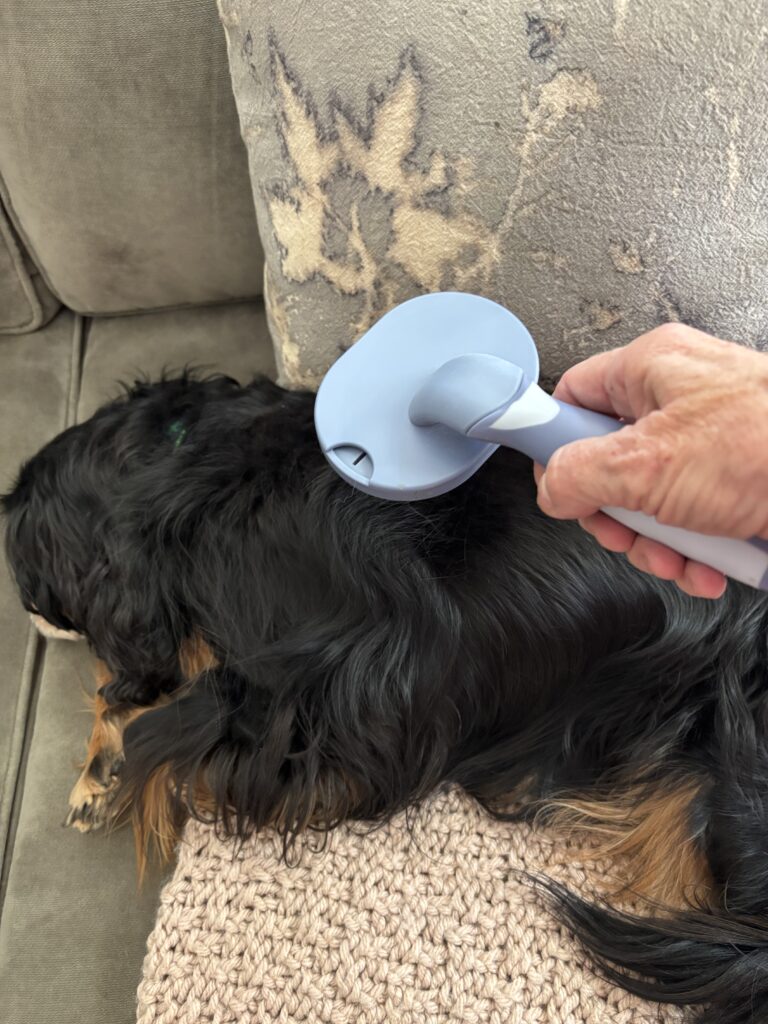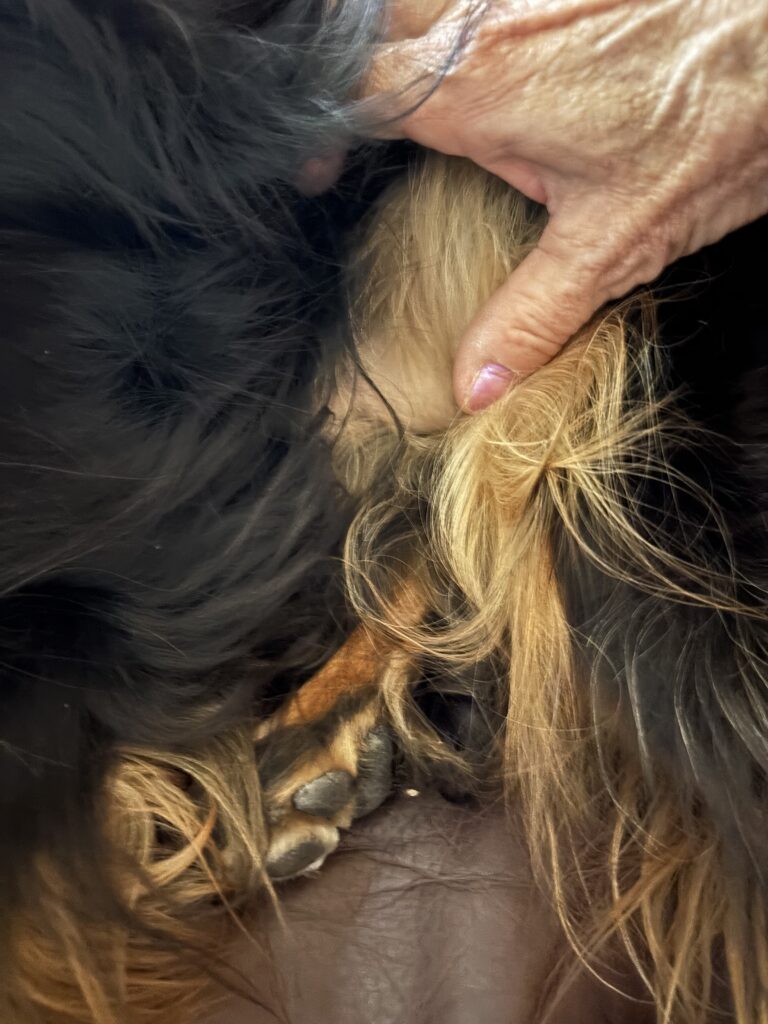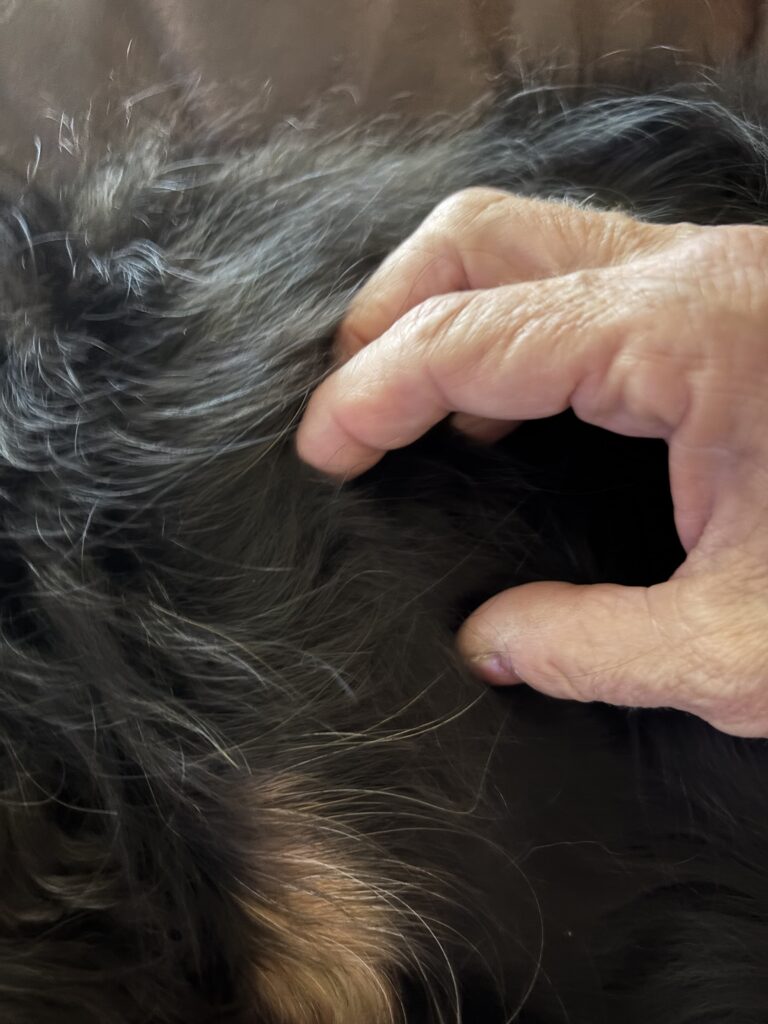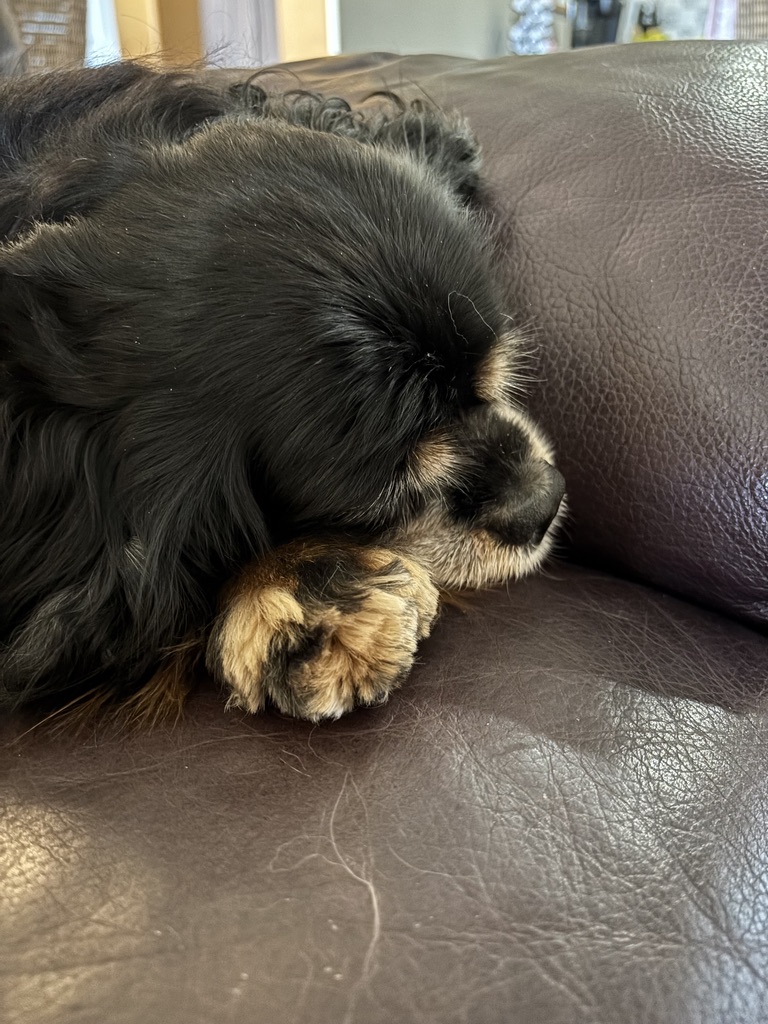April 8, 2025
A dog’s largest organ is their skin. It can be 12-24% of their overall weight. The skin provides a barrier to the weather, helps regulate their temperature and helps to resist infection.
The dog’s skin can tell the vet about their nutrition, allergies and even provide important signs about their internal organs.
Every dog and breed has different needs, but I have some general guidelines.

Regular brushing
Use a brush or comb suited to your dog’s type of coat. Dogs have everything from being hairless, to dogs with longer fur or shorter fur. There are dogs with medium coats, curly coats, wire coats or even a silky coat. Some have a double coat. This means that the dog has a shorter under coat with a longer coat on top to help keep them warm in the winter. That undercoat will shed out in the spring, making brushing a must.
Trimming
If you own a dog that has fur that keeps growing, like a poodle, regular hair cuts are necessary. Keeping your dog’s hair a manageable length will prevent mats and tangles.
Bathing
Use a shampoo that is made for dogs and contains vitamins E and B.
Rinsing the shampoo out throughly is super important. Leaving any shampoo behind can cause dryness, flakiness and irritation. Rinsing should take longer than shampooing.
Inspect their skin

During petting and belly rubs look for any ticks, insect bites, irritation or dryness.
A good diet
Up to 35% of a dog’s daily protein goes into keeping their skin and fur healthy. A proper diet including the amount you feed them is important to also maintain a healthy weight.
Flea and tick prevention

Flea and tick prevention medications need to be given on a schedule. Most are given once a month. Fleas can cause itching and irritation. Ticks carry Lyme disease which can be spread to your dog.
Wormer
Internal parasites can affect weight, condition and quality of the fur. Dogs eat grass, get into dirt and other more gross unappetizing things that can lead to worms. Use a wormer as directed by your vet.
Sun protection
A hairless or near hairless dog is prone to sunburn. Buy a sunscreen made for dogs. Applying a waterproof sunscreen of SPF 30 will make Fido’s day outside end on a good note. Other dogs can be prone to sunburn as well. Dogs with shorter fur and some are even prone to their nose burning. Don’t forget the sunscreen for you or them.
When to contact your vet
If you notice any new lumps, bumps or a sore that isn’t healing. Also, any signs of an infection, like redness, swelling, or drainage. Changes in behavior such as itching that continues, persist biting or licking is another sign that they are uncomfortable.
Prevention

Knowing what you dog’s skin looks and feels like normally can be very important to the health of your pup.
They can rest a little easier now that you know what to look for.
Kelly